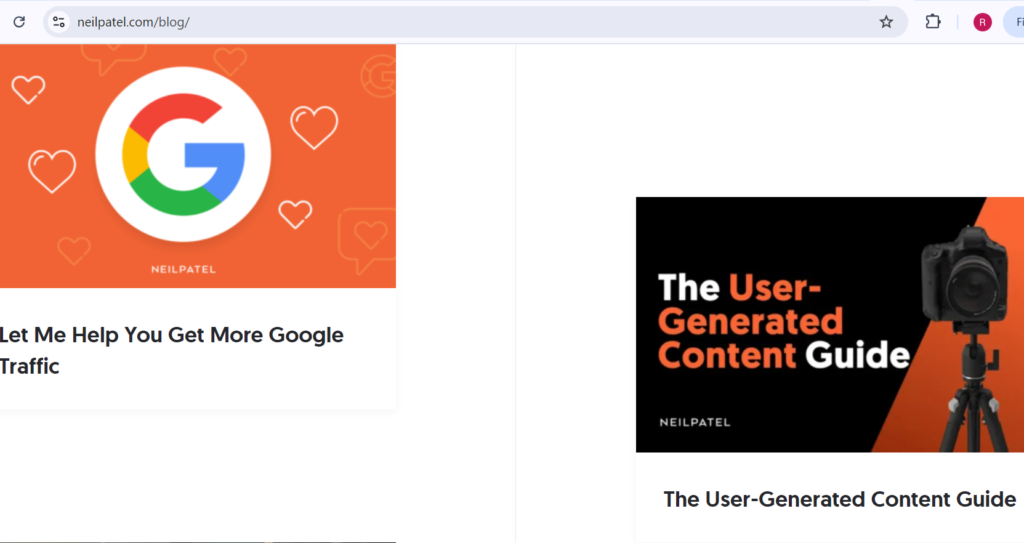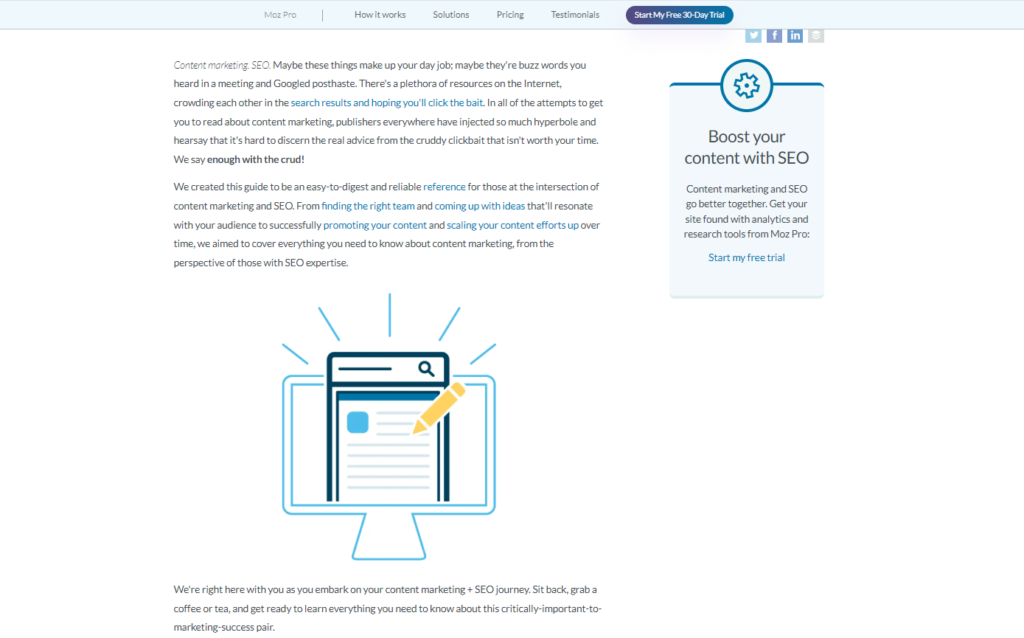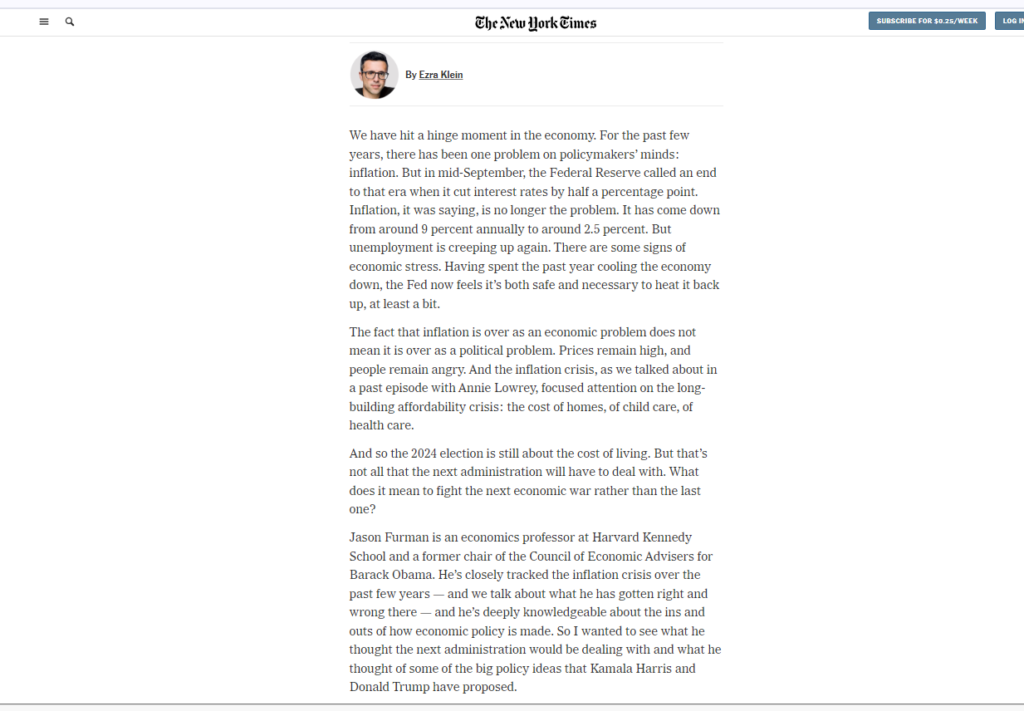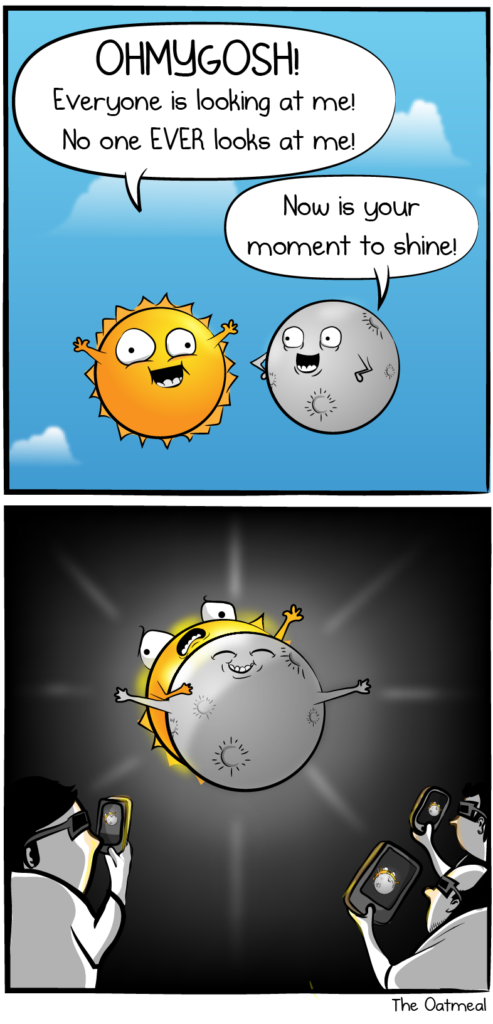Hello students! This is Content Writing Examples for Students
If you are aspiring to become a writer, but have no idea on how to start, then this is right for you.
Well, guess what?
If you’d like to learn about content writing Examples today is your lucky day because we are going to discuss it at length.
So, before moving any further, let it be clear that what is content writing; rather, why content writing is So crucial?
In a nutshell, content writing can be described as the act of regularly and consecutively writing and posting content with the obvious and tangible goal of using the content to appeal to a particular demographic.
In fact, it is more extended than a marketing tool.
As it is a way to deliver your message to your audience, to gain their trust and influence their buying decision.
And, come on, who doesn’t want to have a chance to deal with communication and have a faithful audience, right?
For the several reasons listed below, it is important for a student to learn content writing.
First of all, it enhances your writing abilities, which are crucial at any company in any positions you will ever embark on.
Secondly, it enlightens you on how to have out of the box thinking when developing ideas to address the audience.
And lastly, it prepares you for employment as more organization and companies are employing content writers to help in communicating their brand narratives.
Well, if you are interested in mastering how to learn content writing and get a job, then you are welcome here.
Getting good examples or having someone to guide you through the whole process will help you conquer content writing and increase your chances of success.
What is Content Writing? – Understanding the Basics of Content Creation
Well, let me tell you, content writing is basically a process or a creation of some form of write up material and passing it as a finished product for either online or quite often most commonly as web content.
Well, let’s break it down:
Definition of Content Writing
Content writing is the act of developing and deploying high quality, engaging, and particular types of content for a target demographic’s consumption. It is a form of expressing yourself to the audience, creating trust, and converting the consumer to a buying one.
Types of Content Writing
There are many types of content writing, including:
Blog posts
Blog posts is an informative Articles add value to your readers and also support positioning your brand as a knowledge authority in your niche or brand.
Articles
Articles presents a wealth of information on a specific area or subject matter.
Social media posts
Social media posts is Brief informative and entertaining posts that allows you to communicate with your followers and establish online presence of a brand.
Product descriptions
Product descriptions is a detailed description of products or services that will help the audience what the thing is about.
Email newsletters
Weekly emails with content that informs your followers and is relevant to their interests that will keeps them engaged.
Importance of Content Writing in the Digital Age
Due to advanced technologies, content writing is significant today than before.
There is so much content out there, and therefore finding your audience and creating or curating content that will appeal to them is critical.
Concrete example of the content writing in action is this website the WriteMasteryHub. It come up with useful pieces on the topics of writing, content creation, and Articles for users and effective for building a brand’s authority.
Once you have a basic idea of what content creation is, you can begin to cultivate the ability to write content yourself and therefore have a solid framework for your work.
In the following section, we will be able to discuss how content writing can be beneficial to students and why it is a good asset in the job market.
Benefits of Content Writing for Students
But why should students care about content writing then?
Oh wow, believe me, it is the complete opposite!
Not only does content writing help to develop your writing skills, but it also becomes a useful direction to develop, both for career advancement and for personal growth of self-confidence and creativity.
How Content Writing Can Help Make Writing Better
it is evident, writing is a skill that takes practice, and the more you write, the better you’ll become.
content writing is also beneficial in that since you are constantly writing as a content writer, you get to be disciplined into writing both frequently and consistently.
- By writing content, you’ll be able to:
- Develop your writing style and voice
- Improve your grammar and syntax
- Learn to write for different audiences and formats
And, as a student, you will learn how to incorporate these skills to your writing assignments, for example, essays or research papers.
How Content Writing Can Enhance Career Prospects
Unsurprisingly, content writing has now become a competitive market when it comes to the employment of today’s professionals.
By learning content writing, you’ll be able to:
- Be more unique than the rest when seeking employment.
- Acquire your own unique identity or image and create your own specialist profile
- Grow your chances of higher income and climbing the ladder in your company or organization
- Develop a Valuable skills that can be useful for most fields of work
For instance, Neil Patel’s blogs is an excellent example of how content writing helps create a personal brand and develop professional recognition in a given niche. Neil Patel has invested a lot of time and effort in creating wonderful, helpful content to reach millions of people and become one of the most popular SEO experts.

How Content Writing Can Build Confidence and Creativity
It is also more than written content, as well as expressing one’s individuality.
By writing content, you’ll be able to:
- Find your voice and your point of view
- Try out different writing styles and writing forms
- Develop your confidence and self esteem
- Learn to think outside the box and come up with innovative ideas
And as a student, you will be able to practice these skills in your course projects to write a thesis, or create a portfolio.
This shouldn’t come as a surprise, and you are probably wondering how you can begin content writing.
Oh, don’t worry! Let me help you with some of those instructions.
Don’t worry, we’ve got you covered!
In the next section, we’ll explore some content writing examples for students, including tips and tricks for getting started.
Content Writing Examples for Students – Mastering Different Content Formats
Having given a general overview of what content writing is, it is now high time to consider how its different types looks like.
By using the experience from the given topic, a student should learn different types of writing to be a professional writer. Let’s consider four types of content writing examples for students exposed in the current section: Blog posts, Articles, Social media posts, Product description.
Example 1: Blog Post – How to Write a Compelling Blog Post
Writing a blog is a wonderful opportunity to improve your skills and to let others know what you know.
However, what can make it powerful is?
Let me exemplify with Moz’s The SEO’s Guide to Content Marketing:

This is an excellent all-in-one guide to content marketing, from the fundamental to the more intricate concepts.
So, how can you write a compelling blog post like Moz’s?
Here are some tips:
- Start with a hook: Grab your readers’ attention with a thought-provoking question, a surprising statistic, or a personal anecdote.
- Use a conversational tone: That entails using a conversational tone when writing so that the reader will feel like they are simply talking to you about a particular issue.
- Use subheadings and bullet points: Break up your content, this will make it easy for readers to scan through the document in order to get an understanding of this content.
- Optimize for SEO: This is to make effective use of relevant keywords for your blog post, meta descriptions as well as optimize the images.
Example 2: Article – How to Write a Well Research Article
yes you should know, writing a professional article differs from a casual blog post where much research is involved.
You should be able to research further into a subject, obtain relevant sources of information, and put them to presentable form.
The New York Times’ “The Economy Is at a Hinge Moment” is an excellent example of a well-researched article that uses storytelling techniques to engage readers.

To write a well-researched article like this, follow these steps:
- Choose a topic: Find or choose a subject that appeals to the public eye and is important to the society.
- Conduct research: Get relevant and authentic information from scholarly articles, books and interviews with professionals.
- Organize your thoughts: Create an outline to structure your article and ensure it flows logically.
- Use storytelling techniques: Create an outline to structure your article and ensure it flows logically.
Example 3: Social Media Post – How to Write an Engaging Social Media Post
Social networking is a great opportunity to interact with the audience and promote your persona.
However, it is Not that easy, when there is so much competition all around it becoming difficult to penetrate through the crowd.
Wendy’s Twitter account is a great example of how to use humor and wit to engage with followers and create a brand personality.
To write an engaging social media post like Wendy’s, follow these tips:
- Keep it short and sweet: keep your post short and to the point.
- Use humor and wit: Try to crack jokes and be as sarcastic as possible to make some content more personal.
- Use visuals: se images, videos, or GIFs to make your post more engaging and shareable.
- Encourage engagement: Ask questions, request feedback, or ask your followers to share their thoughts.
Example 4: Product Description – How to Write a Persuasive Product Description
In all e-commerce websites, there is always a need to engage in a product descriptions.
It needs to persuade potential customers to buy your product, highlighting its features, benefits, and unique selling points.
Apple’s product descriptions are especially worthy of attention as concerns how to use Persuasive language in order to sell something and form a brand image.
To write a persuasive product description like Apple’s, follow these steps:
Focus on benefits: This means replacing features with benefits and how your product will make customers’ lives better or easier.
Use persuasive language: Use words like ” revolutionary,” “game-changing,” and “innovative” to create a sense of excitement and urgency.
Use social proof: Also, share customer reviews and ratings and apply customer testimonials to make the site more trustworthy.
Use a clear and concise tone: It is very important to use simple language when giving information on a product that can easily be understood by the customers.
Learning all these various forms of content will help you become a great writer and employed in various writing situations.
Try not to forget your audience, use conventional tone, and make it SEO friendly all at the same time.
How can i be creative when content writing?
Now that we’ve covered the basics of content writing and explored different content formats, it’s time to talk about the fun stuff – creativity!
As a content writer, you want to stand out from the crowd and make your content truly memorable.
But, how do you do that? In this section, we’ll dive into some tips and techniques for unleashing your creativity in content writing.
How to Think Outside the Box and Come Up with Unique Ideas
Sometimes, the hardest part of content writing is coming up with ideas.
Perhaps, you’ve written the same topic a thousand times in your mind already, but you’re unsure how to refresh the subject matter.
However, there is always a solution on how to brainstorm for creative solutions outside this traditional Box.
Here are a few techniques to try:
no 1# Change your perspective
You can attempt to look at your topic from a different perspective.
Sometimes do not write about something that is just now in front of your eyes let try to write at a different angle.
no 2#Use brainstorming techniques
Switch off the lights and try a free write for 10 minutes; try to jot down as many ideas as you can come up with.
Don’t worry about whether they’re good or bad – just focus on generating ideas.That’s fine, it doesn’t mater whether they are ideas or not, just write them down.
no 3#Use mind mapping
Create a visual map of your ideas, using colors, symbols, and images to connect related concepts.
Techniques for Brainstorming and Mind Mapping
Brainstorming and mind mapping are two powerful techniques for generating ideas and exploring new concepts.
Here’s how to use them:
no 1# Start with a central idea
Always start with the big picture, then work your way down from there.
Use keywords and phrases
Applying keywords and phrases will help to perform a call for new ideas and connections.
Create a visual map
Use colors, symbols, and images to create a visual map of your ideas.
How to Use Storytelling and Anecdotes to Make Your Content More Engaging
Storytelling makes your content more engaging and memorable, a thing that is very crucial when creating content.
Stories, whether about you or somebody else, make your readers feel like you’re personally speaking to them.
Here’s how to use storytelling in your content:
Use personal experiences
Use examples and stories to support your information. it is a good way to make it easier for the audience to understand you.
Create a narrative
One of the ways you will be preparing your readers for your topic is by using a narrative structure to tell them a story.
Use descriptive language
Use descriptive language to bring your story to life and create a vivid picture in your readers’ minds.
Tips for Using Humor, Metaphors, and Other Literary Devices to Add Creativity to Your Writing
Humor, metaphors, and other literary devices can bring a lot of creativity into your writing.
Here are some tips for using them:
Use humor to break the ice
Use humor to break the ice and create a connection with your readers.
Use metaphors to explain complex concepts
Use metaphors to explain complex concepts and make them more relatable.
Use alliteration and assonance
Use alliteration and assonance to add musicality to your writing and make it more interesting for the target audience.
Example: The Oatmeal’s Comic Strips
The Oatmeal’s comic strips are a great example of how to use humor and creativity to engage readers and convey complex information in a simple way.
Matthew Inman’s comics are hilarious, relatable, and informative – and they’re a great example of how to use creativity in content writing.

Applying these tips and trick you will be able to unleash the power of creativity and make your content exceptional.
These are the tips to keep in mind use box thinking techniques, brainstorming and mind mapping, storytelling and uses of literary devices.
Overcoming Writer’s Block and Staying Motivated
Oh, the infamous writer’s block: the nemesis of any writer, author or journalist.
It happens to the best of us and you probably know what it is: you sit in front of a piece of paper and your mind is just a big blank.
But, hey, don’t even think it is the end of the world.
In this part, you’ll find a few tips to deal with the conditions that often lead to writer’s block and back to motivation.
Strategies for Overcoming Writer’s Block and Staying Motivated
Well now this brings me to my last question, how on earth do you eradicate writer’s block and keep focused? Here are some strategies to try:
Break your writing into smaller tasks
Instead of looking at your writing project as a whole, break it down into smaller tasks. This will make it not to look burdensome and instead look quite manageable.
Use a writing schedule
The first pointer is to set a writing schedule and ensure that one stuck to it all the time. This will enable you to keep track and make some progress to your written project.
Take breaks
Rest your brain by getting some fresh air, go and cook something or even take a power nap. This will assist you to make your mind free from clutter and come back to your task with a fresh mind.
Get support
Share your work with friends and families, or join a writing group. This above will assist you in keeping forward the motivation and accountability.
How to Set Writing Goals and Deadlines
As with any profession, having writing goals and deadlines will go a long way towards helping one stay on track.
Here’s how to do it:
Set specific goals
Establish particular objectives of your written work. What do you want to achieve? That is to say, what are your ideas?
Set deadlines
Develop a time line as far as writing is concerned for the achievement of the writing project. Which date do you want to complete it by? What’s your timeline?
Make a plan
Develop a map of how you are able to get to where you want to be. What do you have to do? What resources do you need?
Tips for Finding Inspiration and Staying Accountable
Finding inspiration and staying accountable can be a challenge.
Here are some tips to help:
Read widely
Read widely and often. This will in turn assist you to keep focused so that you do not lose your spirit in the process you are undertaking.
Use writing prompts
For starting up some writing, it is recommended that you should use writing prompts. This will help you stay inspired and motivated.
Join a writing group
You should join a writing group or acquire a writing partner. This will then serve the purpose of keeping you on your toes and motivated to do the best you can.
Example: The Pomodoro Technique
I believe that for a person engaging in writing, the Pomodoro Technique should be the Tool of Choice.
Focused bell work is a teaching technique that involves completing tasks in blocks of 25 minutes for actual lessons and broken by a five-minute break.
This can help you not to get stressed with your work and get over tired.
For example, using the Pomodoro Technique you can write an article of about 500 words.
Here’s how:
- Set a timer: Set a timer for 25 minutes.
- Write: Write without stopping or taking a break.
- Take a break: Take a 5-minute break.
- Repeat: Continue doing this until you’ve completed your article.
You can use a tool like Pomofocus to help you stay focused and on track. Pomofocus is a customizable Pomodoro timer that works on desktop and mobile browsers. It’s a great tool for staying focused and motivated while writing.

By deploying these techniques you are likely to overcome writer’s block and remain more motivated in your work.
In particular, do not forget to set Different writing targets and time frames, look for ideas, and report to someone about the work.
Happy writing!
Conclusion
In the current world that is highly technological, the craft of content writing is one of the most important skills a student should develop.
Whether you are writing essays for university, creating content, or using the web to showcase your portfolio, there is no doubt that understanding content writing will do you a world of good.
Since it is not about writing mere words on a piece of paper, it involves capturing the attention of your reader, making him or her understand your thoughts clearly and making your reader interested in what you’ve written.
This is especially important for students as content writing enhances their analytical capability, research skills as well as writing skills.
All these are basic good traits, not only when one is studying but also when one joins the working world.
Also, there are numerous content writing examples for students presented online so you’ll never run out of ideas to expand your scale.
I’ll suggest embracing content writing, trying different approaches, and, in general, be as creative as it is possible.
You may write simple, but your writings will improve progressively as you develop the relevant writing skills.
Just as important as any strategy listed above, the willingness to continue to write and to continue to learn is the key to becoming a successful content writer.
So, what are you waiting for?
Start writing articles today and who knows? It clearly stated how this skill could revolutionalize your future in any field, academic or career.
FAQ
What are the relative differences between content writing and copywriting?
Content writing is the process of writing good, reliable, and interesting content such as blogs, articles or an essay. It is to persuade the reader or simply to inform him.Sections It can inform, persuade or even entertain the reader. On the other hand, copywriting deals with persuasion – the end benefits of its use are to advertise, popularize, or advertise on behalf of the owner of a certain product or service that is to be sold. Although the two demand writing to be in their conduct, their purpose plays the main difference.
How do I start with content writing?
You feel it is challenging to start content writing? It’s not. Start with daily practice writing. Let’s get you started by setting up your very own blog or contribute to online published papers, like Medium. You can add writings about topics that you are interested in. Find some content writing examples for students by studying the techniques and the formats used by any experienced writer. Do not fear experimenting and finding your voice.
what are some common mistakes in content writing?
Some of the common mistakes in content writing include
- Writing without defining an audience
- Entering too much detail
- Using jargon that’s difficult for readers to understand
- Not proofreading, which can lead to grammatical errors
- Forgetting to do one or more forms of SEO for which your content will be harder to find by users online.
This ensures you Don’t commit these errors and keep the focus on readers, keeping them wanting clarity and engagement.
How do I get paid for content writing?
There is certainly no shortage of possibility in writing when it comes to generating that cash. Those include freelance opportunities working for websites, blogs, or businesses, most of which are continually in need of fresh content. Check out other resources and marketplaces, like Upwork, Fiverr, and Freelancer, to get started. Once you have a portfolio, you will be able to pick and choose your niche areas and more money, such as your expertise in writing for SEO, technical writing, or ghostwriting.
How do I stay creative, or what do I need to develop new ideas for the content I create?
Well, it is not so easy to stay creative, but it is all about feeding your brain with inspiration. Reading will bring you a lot of ideas. Start with books and articles, blogs as well, and just look at everything else; get inspiration from different sources. You could try brainstorming sessions with yourself; write down those random ideas and then develop them into topics. Surfing through examples of content writing for students may give you ideas and ways you wouldn’t think of; lastly, take a break when you get stuck-the slight distance from your work will often renew creativity.



